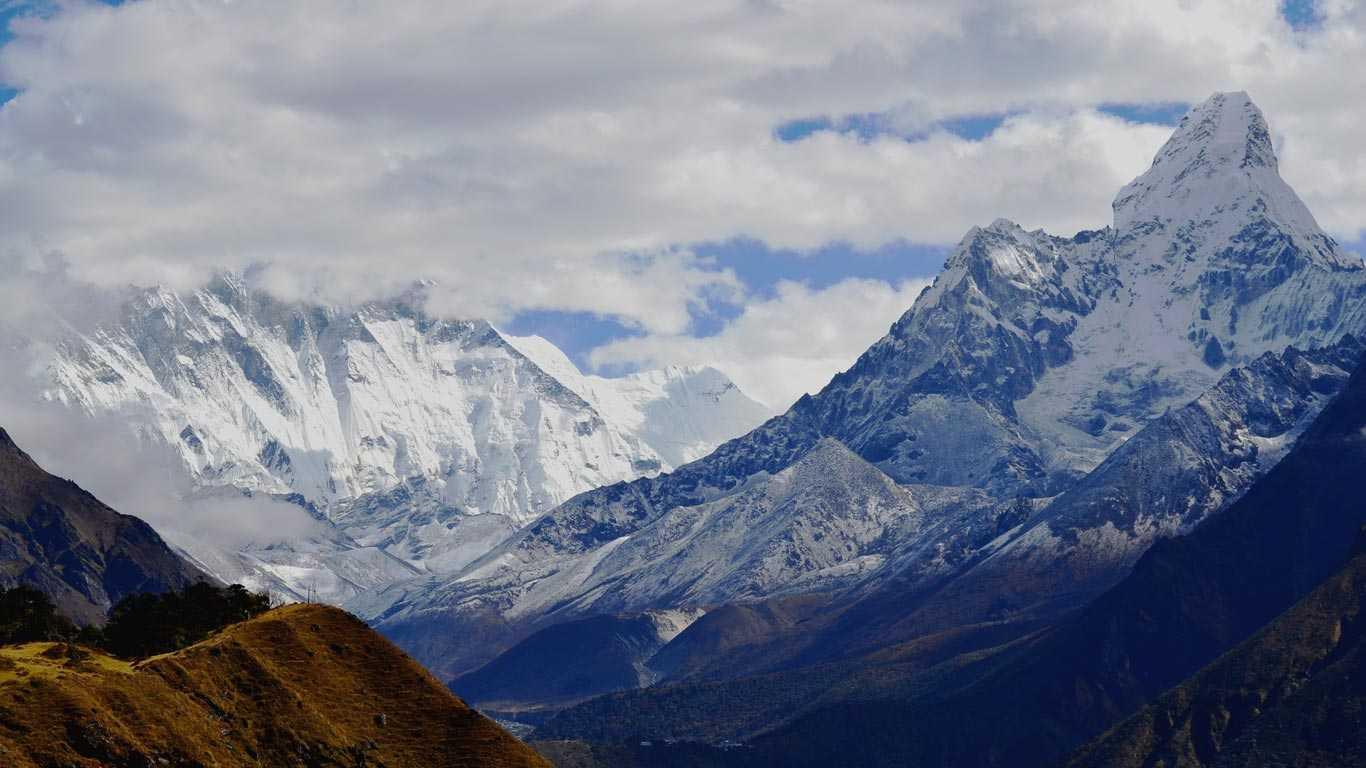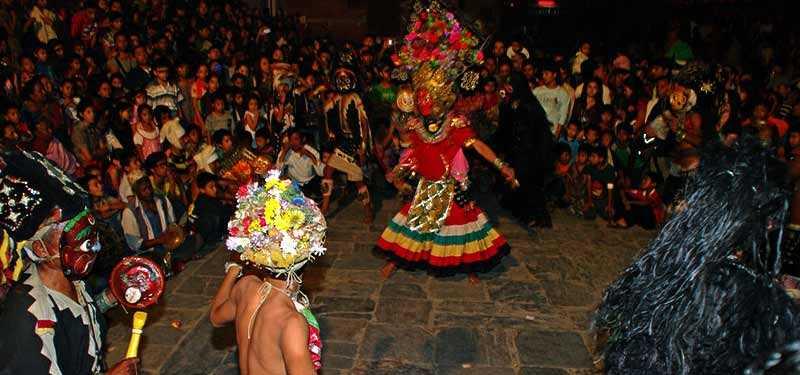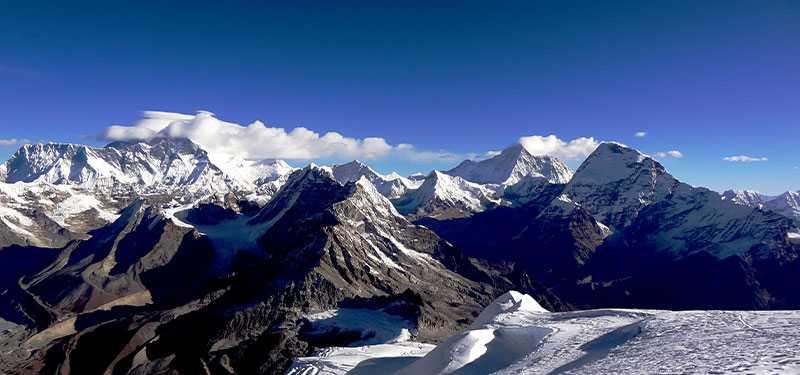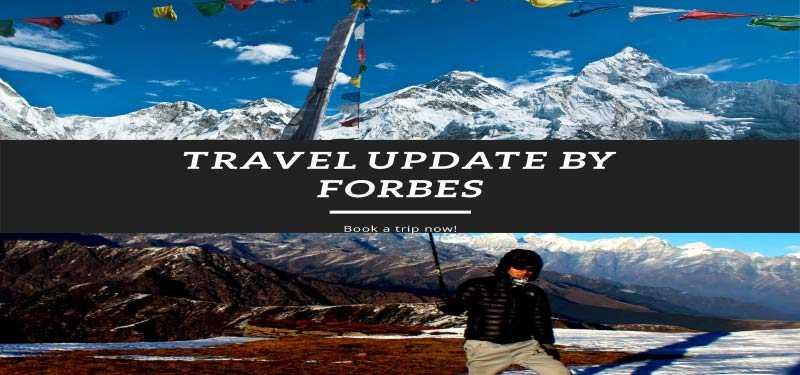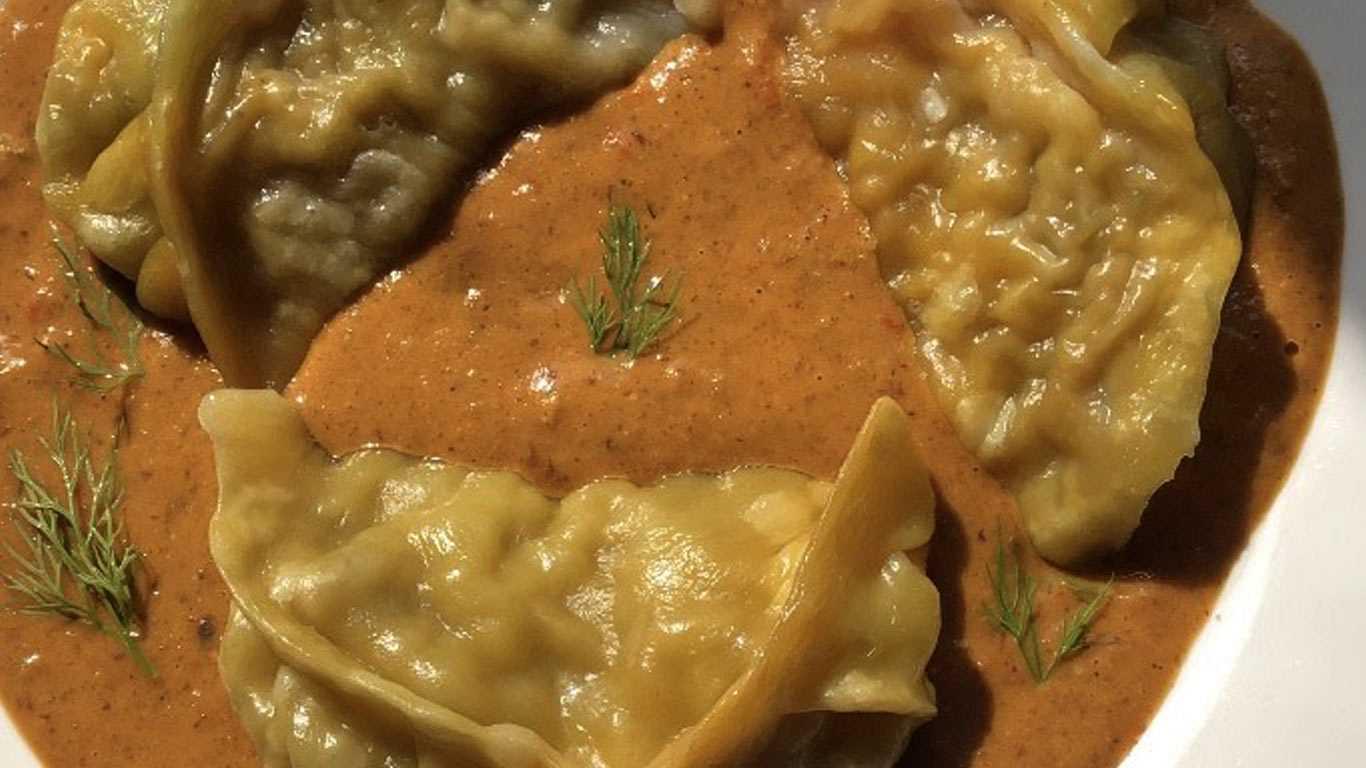Reasons to Visit Upper Mustang
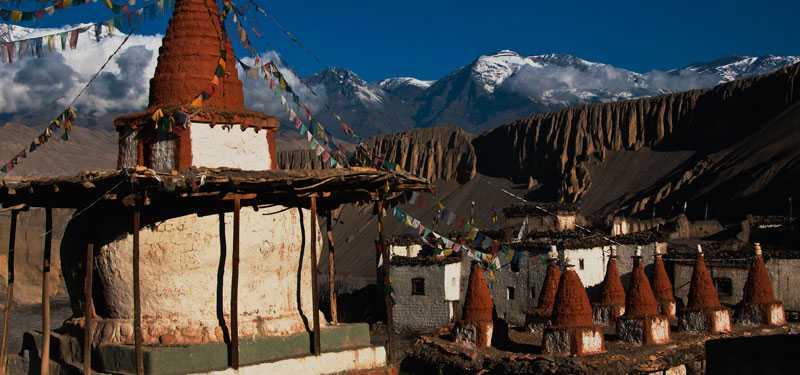
Reasons to Visit Upper Mustang
Mustang is a mystic valley located in the Annapurna Region of Nepal. This forbidden kingdom was once an independent kingdom, and the King of Mustang resided at the walled city of Lo Manthang. Mustang has a unique geography, similar to that of Tibet, consisting of an arid, desert-like landscape with red rocky cliffs, sandy dunes, narrow valleys, and a majestic view of the Himalayas. This land tucked behind the Himalayas is divided into two parts: Upper Mustang and Lower Mustang.
This mystic land is home to the world’s deepest gorge, Kali Gandaki Gorge, ancient towns like Jomsom, Lo Manthang, Kagbeni, Tsarang, etc., sky caves, a fortress, and significant religious sites including Muktinath Temple, Tsarang Monastery, Jwala Mai, Ghar Gumba, Namgyal Monastery, and many more. It is also one of the last places on earth where sky burial and Bon religion are still prevailing. Similarly, Mustang also offers a picturesque view of the snow-capped mountain, including the Annapurna and Dhaulagiri massif.
This sacred valley is renowned for its association with finding holy Shaligram (ammonite fossils). In Hindu mythology, Shaligram Shila is an incarnation of Lord Vishnu. These fossils are available on the Kaligandaki River shore, and thousands of Hindu pilgrims visit Mustang. Likewise, the ancient land of Mustang carries a lot of history, culture, and ambiguities, and it used to be an old salt trade caravan trail in the past.
1. The Muktinath Temple
Muktinath Temple stands at an altitude of 3,800 m, located at the foot of the Thorong La pass. This holy shrine is sacred in both Hinduism and Buddhism. It is one of the must-visit temples in Nepal. Muktinath derives from two words, “Mukti” meaning salvation, and “Nath” meaning God; hence literally means “the God of salvation.”
Hindus believe that this sanctuary is self-risen and a holy site where Lord Vishnu attained salvation from the curse of Jalandhar’s wife Brinda. It is a Swayam Vyakta Kshetra, one of eight self-manifested shrines, one of 108 Divya Desham, 4 most important Hindu heritages, and one of 51 Shakti Pithas.

Several pilgrims visit this site believing it to be a ‘Mukti Kshetra’ (place of salvation). Legends state that taking a bath in 108 Muktidhara (a holy faucet that flows from Kali Gandaki) and two Kunda (holy ponds) forgives their sins performed in a lifetime and brings them redemption.
The Shakti of Muktinath temple is known as "Gandaki Chandi" and the "Bhairav" known as "Chakrapani". Inside the main shrine consists of a golden statue of Lord Vishnu, bronze images of Bhoodevi (manifestation of Goddess Lakshmi), Goddess Saraswati, Sita, Garuda (vehicle of Vishnu), sons of Ram and Sita, Lava and Kusa, and seven sages created by Lord Vishnu known as Sapta Rishis.
The great Guru Rinpoche/Padmasambhava also meditated here. Muktinath Temple is known as Chumig Gyatsa in Buddhism, which translates to Hundred Waters. It is of great significance for Tibetan Buddhists as a place where Dakinis (goddesses known as Sky Dancers) reside. It is also believed to hold great spiritual powers as it is one of the 21 Tantric sanctuaries.
It is also popular for Jwala Mai or Salambar Dolamebar, an eternal flame representing a union ship between completely different elements of water and fire. It produces fire eternally from the Himalayan Spring Water resource, as it produces natural gases.
2. Trekking in a Unique Landscape
Mustang's eccentric landscape is one of the many reasons why it should be explored. It is a remote valley far from the modernization of the world; hence, everything here is in its true form. Located in an isolated region behind the Himalayas, Mustang is a very peaceful place to relax away from the hustle and bustle of daily life.
The landscape here is very different from any part of Nepal. It is rather similar to Tibet geographically and geologically.
Trekking in this tranquil valley through rugged and off-the-beaten trails, witnessing semi-arid landscape, rocky red cliffs, sandstones, eroded hills, canyons, sandy dunes, and a sublime view of the Himalayas is a luxury itself.
 This region offers a majestic view of the Annapurna and Dhaulagiri massifs. Similarly, Mustang is not only rocky hills and deserts. A hint of greenery and vegetation can be observed here. Lush green forests, terraced fields, meadows, and farmlands of buckwheat, apples, barley, potatoes, etc, are especially seen in Lower Mustang.
This region offers a majestic view of the Annapurna and Dhaulagiri massifs. Similarly, Mustang is not only rocky hills and deserts. A hint of greenery and vegetation can be observed here. Lush green forests, terraced fields, meadows, and farmlands of buckwheat, apples, barley, potatoes, etc, are especially seen in Lower Mustang.
The beauty of this varied landscape experienced as you trek from Lower Mustang to Upper Mustang is truly magical. Since this destination was restricted for outsiders not long ago, it remains pristine and preserved.
3. Tiji Festival in Lo-manthang
Tiji Festival is a very significant festival celebrated in the Upper Mustang region of Nepal. This annual 3-day-long Tiji festival is celebrated to mark the victory of good over evil. Tiji derives from the word ‘Tempa Chirim,’ which means ‘Prayer for World Peace.’
During this festival, the locals honor the legend of Dorje Jono, who saved Mustang from a demon by praying, chanting Mantras, and dancing. Ancient mythology states that Dorje Jono, known as Dorje Phurba/ Vajrakila/ Vajrakumar, is a deity in Vajrayana Buddhism.
Guru Rinpoche (Padmasambhava), Vimalamitra, and Shilamnju introduced and promoted this practice in the 8th century, but it was only known to the Mustangis (Mustang inhabitants) in the 17th century when King Samdup Rabten invited Shakya Trizin Ngawang Kunga Sonam to Lo Manthang. He stayed at the Chhode Monastery and performed the Vajrakila ritual to diminish negative energy and in the hope of a peaceful nation. This traditional ritual/dance, wearing colorful costumes and ornaments, has been performed every year since then.

There are many legends behind the demon of Mustang. Many people believe that the demon was torturing Mustangis by creating water scarcity in the arid landscape of Mustang, whereas some say that he spread a water-borne disease that killed hundreds of inhabitants. And the most surprising of them is that it is highly believed that Dorje Jono was the son of that demon.
Originally, the Tiji festival was celebrated at the end of the year according to the Tibetan calendar, but at present, it is celebrated at the third Tibetan month, which falls during May. The Tiji festival is celebrated at the courtyard of the Royal Palace, and every family in Mustang, including the Royal Family, takes part in this ritual, performing different ceremonies.
Foreign travelers are also allowed to take part in and enjoy this vibrant festival. Tiji festival is a part of the meditation practice based on the tantra, which is related to Vajra Kumar. There are three main parts of this dance ritual. The first one is the opening part, which includes 15 dance steps, the second part reflects the formation of the heavenly palace and the era of God's which is divided into two steps.
Then, finally, the last part, the conclusion, where they take steps to clear away boundless outlooks to serve felicitousness. The people who celebrate this festival have faith that the difficulties and obstacles of life will be solved by observing these main steps with respect, trust, and appreciation.
4. Lo-Manthang Mustang
The walled city of Lo Manthang was discovered in 1380 AD by Ame Pal. This former Kingdom of Lo is now the capital of the Upper Mustang. It was restricted for foreign travelers to visit until 1992, but still, certain permits are required to travel here.
It was also well-known in history as a silk trade route between Tibet and India. This town is encircled by a 6-meter-high clay divider with square strongholds on the edges and a tight foundation of earthen structures endured inside these walls. Lo Manthang was a separate kingdom until unified in 1950.
 Lo Manthang is very rich in art and culture. Several gold and silver paintings date back to the 13th century. The script of the paintings is written in Tibetan, but they reflect Newari influence because the people of Newar ethnicity are devoted to Vajrayana Buddhism, and the influence of Vajrayana Buddhism is also found in Mustang, and also because of being a trade route.
Lo Manthang is very rich in art and culture. Several gold and silver paintings date back to the 13th century. The script of the paintings is written in Tibetan, but they reflect Newari influence because the people of Newar ethnicity are devoted to Vajrayana Buddhism, and the influence of Vajrayana Buddhism is also found in Mustang, and also because of being a trade route.
These paintings are usually found on sheer cliffs. The houses of this town are made up of clay and painted in white, yellow, and blue; as the locals believe that white represents the God of compassion, yellow represents the God of wisdom, and blue represents the God of protection.
The major attraction of Lo Manthang is the five-storied royal palace (Lo Manthang Durbar) that has nine corners and four Gompas adjacent to the palace. Likewise, thousand-year-old monasteries like Jampa Lakhang, Thupchen Lakhang, Chhoede Lakhang, Thupchen Gompa, and others increase the reputation of this hidden kingdom.
As soon as you step on this pristine land, it will take you back to the medieval days. Exotic caves, ancient monasteries, mani walls, chortens and stupas, and the unspoiled Tibetan Buddhism culture, far from civilization, make this land of myths and mysteries.
The inhabitants of Lo Manthang, Lhobas, have a very unique culture and tradition, completely different from any other ethnicity of Nepal. The Tibetan Buddhism they follow and the Tibetan dialect they speak is believed to be the unspoiled version.
They preserve their culture and tradition, and if you wish to know more about their culture, the Lhoba people are pleased to share it with you. Similarly, their warm hospitality, unique culture, and cuisine are what will amaze you more.
5. Indigenous and Nomadic Tribes and Their Lifestyle
Inhabitants of Mustang are usually referred to as Mustangis. They migrated from the Tibetan plateau, Mongolia, South Asia, and South East Asia more than 3000 years ago. Ame Pal was the Tibetan warrior who first established the human settlement in Mustang and started ruling as their King.
The inhabitants of Mustang are Thakali, Lhoba, and Gurung. Thakalis are the major inhabitants of this region. They are one of the richest ethnic groups of Nepal and are well-known for living a luxurious lifestyle. They are called Thakalis as they originated from Thak Khola of southern Mustang. Thakalis claim to be the descendants of the Thakuri Prince Hansraj of Jumla.
 Lhobas are the indigenous people of Lo Manthang. They are the descendants of Ame Pal, hence, the original inhabitants of Mustang. They follow an order of social class. Kudak, also known as Bista, is the royalty of the Kingdom of Lo.
Lhobas are the indigenous people of Lo Manthang. They are the descendants of Ame Pal, hence, the original inhabitants of Mustang. They follow an order of social class. Kudak, also known as Bista, is the royalty of the Kingdom of Lo.
Then there are Phalwa who live inside the walled city. Similarly, Ghara is a blacksmith, Sheba is a butcher, and Emeta is a musician. They mostly live outside the town beside the Lo Manthang river. Gurungs became the natives of Mustang rather later. They were married into this region, but are now a dominant ethnicity.
Mustang is one of the last Nomadic lands. Very few numbers of families are still living their lifestyle as nomads in Mustang. They migrated here from Tibet several decades ago. The nomads of this region migrate twice a year, once in spring and once in autumn. During spring, they go towards the mountains, and during autumn, they go down to lower altitudes due to harsh winter weather.
Likewise, these nomads are yak herders, and their lives depend on the yaks. They sell their yaks to the locals to make a living and for their children’s education. They live in a cozy tent made from yak fur, drink yak milk, and prepare butter, cheese, and food from the milk.
During previous times, nomads used to wear clothes made up of yak fur and shoes of yak leather. They have a very difficult yet unique lifestyle, and they hope their new generations will continue to preserve their culture, cuisine, and lifestyle.
6. Culture and Religion in Upper Mustang
Mustang has a very rich and diverse culture. It is highly influenced by Tibetan Buddhism cultures and traditions that remain unspoiled for several centuries. In this Buddhist Kingdom, there are Mani walls, chortens, stupas, monasteries, paintings, etc. flourished everywhere to preserve their culture.

Vajrayana Buddhism is highly followed here, but Theravada is also seen. Similarly, Mustang is one of the last places on earth where the Sky Burial and Bon religion are still prevailing. Bonpo or Bon religion is a pre-Buddhist religion that practices Shamanism. Bon believes that sky divinity exists. They worship nature and its creation, and also perform offering rituals.
Sky Burial is an ancient funeral practice where a human corpse is taken to a mountain top after being sliced into pieces and left for decomposition and to be eaten by animals. They take this as kindness towards animals, as they believe that one’s spirit will reincarnate in a new form, and the body will be left to nourish the creature that is alive. Likewise, animism and shamanism also seem to be followed in Mustang.
7. Mystic Caves and Ancient Monasteries in Mustang
Mustang is an archeological mystery. There are around 10,000 sky-caves here. The earliest ones were discovered to have been built in 1000 BC. These caves were used for sky burial till the 8th century. Later, during the 10th century, people used it as a habitat to stay protected during times of war.
 By the 12th to 15th century, they were being used as a meditation chamber. Similarly, these caves were also used as a military lookout and storage unit. Artifacts such as paintings, sculptures, manuscripts, and many more from both Bon and Buddhism were discovered in the caves. There are also some monasteries in the caves that have been preserved till now.
By the 12th to 15th century, they were being used as a meditation chamber. Similarly, these caves were also used as a military lookout and storage unit. Artifacts such as paintings, sculptures, manuscripts, and many more from both Bon and Buddhism were discovered in the caves. There are also some monasteries in the caves that have been preserved till now.
Mustang has hundreds of ancient monasteries dating back around 3000 years. These monasteries are of both the Bon religion and Buddhism and reflect abundant culture and history. They also have unique and amazing architecture. Some of the notable monasteries include Lo Gekar Monastery, Jampa Lhakhang, Thubchen Gompa, Ghar Gumba, Namgyal Monastery, Tsarang Monastery, Salambar Dolamebar Gompa, Marpha Monastery, Luri Gompa, Chungsi Cave, Lo Ghyakar Monastery, Chhoede Gompa, and many more.
8. Can be Visited Any Time of the Year
Mustang is located in the Trans-Himalayan region of Nepal, so it receives less rainfall. Generally, there are two best seasons, Spring and Autumn, to trek in Nepal, but Mustang can be visited any time of the year except during harsh winter.

Summer trek is not suggested for any treks in Nepal because we receive summer monsoon, and during that time, the view is not clear, the trails are muddy, slippery, and it is typically gloomy. But Mustang makes an exception because it lies in the Rain Shadow of the Annapurna Range.
Although the trek to Mustang can be done any time of the year except for the coldest winter days, the best time, Himalayan Trekkers would suggest, is from May to November because it is quite warm during this time and there are the lowest chances of rainfall, snowfall, and disturbance caused due to natural disasters. And to top it up, the view of snowy peaks and clear blue sky is spectacular.
Useful Information to travel in Upper Mustang:
1. Drinking water in Mustang
In Mustang, natural Himalayan spring water, bottled Mineral water, and boiled and filtered spring water are available. There is no problem with the availability of water in Lower Mustang, but trekkers will have to pay a certain amount for other waters, except for the Himalayan Spring Water. If the travelers wish, they could fill the Himalayan Spring Water flowing from streams and taps, and purify it.

Similarly, while trekking in Upper Mustang, trekkers will have to carry enough water because sometimes, while trekking, water resources are not available, but they will be informed beforehand by the Himalayan Trekkers guide.
Likewise, we recommend you either buy the boiled and filtered water from locals and store it in your water bottle, as it helps for their income generation and sustainable tourism, or bring water filter-handpumps, UV water purifiers, or Chlorine drops by yourself to purify the water.
2. Accommodation
In Jomsom, accommodation ranging from budget hotels/lodges to comfortable 5-star category resorts is available. However, luxury from Kathmandu and Pokhara cannot be expected. Likewise, above Kagbeni and further, tea houses, homestays, and lodges are available.
Villages in the Upper Mustang are very remote. Homestays are available, but the room is shared with other people, which mightn’t be very comfortable. In homestays, you will experience the authentic local culture.

Similarly, among the places of Upper Mustang, in Tsarang, Lo Manthang, and Ghami, you can expect a bit better, cleaner, and comfortable accommodation with a private bedroom and bathroom. Especially in Lo Manthang because it is quite developed and a tourist center, guesthouses, and hotels are also available.
Camping will be necessary for very few places which do not have tea-houses, but camping will always be an option if you would rather wish to camp rather than stay in other accommodation.
3. Meals
Tsampa, Thukpa, Buckwheat/Barley bread, Tibetan bread, and Thakali cuisine are available during the entire trek. In Lower Mustang, Continental, Indian, Nepali, and Western food is also available.

Travelers will not have to be concerned about food the entire trip because Mustangis are very top-notch about their food, and the Himalayan Trekkers guide/team will always make you have clean, safe, and nutritious meals.
We highly recommend you taste the Thakali cuisine because these people have very luxurious, tasty often regarded as the royal meal, very safe, hygienic, and full of nutrients.
4. How to reach Upper Mustang?
• Overland tour
Mustang can be traveled to by a scheduled public bus from Kathmandu/Pokhara. The scheduled bus will take you to Jomsom, and the travelers either trek from Jomsom and end it at Jomsom or take a local sharing jeep or private jeep from Jomsom to Upper Mustang/Muktinath.

However, the public bus and sharing jeep will not be very comfortable, but are quite fine in terms of affordability. Likewise, Mustang is also a very popular destination for motorcycle tours and Cycling tours, perfect for adventure enthusiasts.
• By Flight
The travelers could either fly or take Private/Public transportation from Kathmandu to Pokhara, spend a night in Pokhara, and fly to Jomson the next morning by helicopter or airplane. You could take a private jeep or trek from Jomsom. Likewise, if you have a limited timeframe and have enough budget, you could do a Helicopter Tour from Kathmandu/Pokhara to Upper Mustang or Muktinath.
Read more blogs
